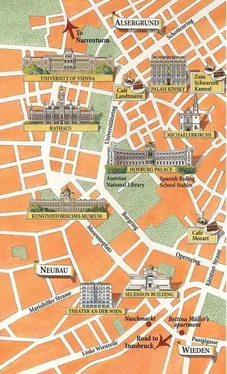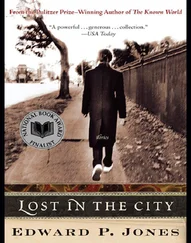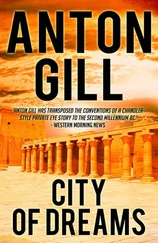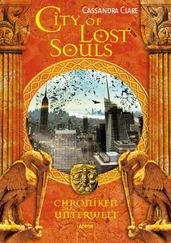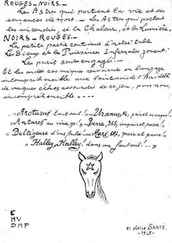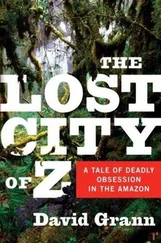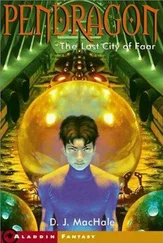City of Lost Dreams
City of Dark Magic - 2
by
Magnus Flyte
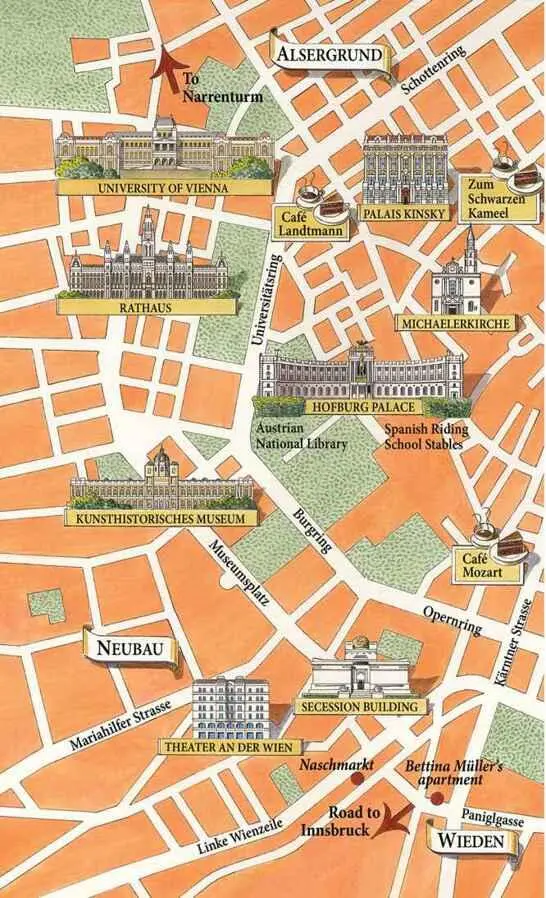
History allows us to realize the tragedy of human existence in its entirety. Knowing the truth means exiting space and time. All movement is searching. The essence of art lies in thinking and giving shape to visions. This is what changes the world.
—RUDOLF LEITNER-GRÜNDBERG
That’s a nice girl, that. But she ought to go careful in Vienna. Everybody ought to go careful in a city like this.
—GRAHAM GREENE, The Third Man
Even the local tourism board had to admit the church attracted a rather unusual crop of visitors. Some came for the novelty, others out of a hazy respect for their fellow man, and some came for more sinister reasons. The last group often turned up after hours, when the gates were locked, the laminated information cards in six languages neatly replaced in their color-coded folders, and the ticket takers safely home in their beds.
About fifty miles east of Prague, the town of Kutná Hora was best reached by a series of country highways pleasantly dotted with fruit stands and artisans selling a patriotic symbol that had been banned under communism: the garden gnome. And in case the Czech place-names with their tongue-twisting traffic jams of consonants proved difficult to decipher for nervous travelers in rental cars, handmade signs in English announcing Bone Church at every intersection provided easy clues for navigation.
Kutná Hora was just another parish in Bohemia until it got the ultimate status bump when a local abbot returned from the Holy Land and sprinkled authentic Golgothan dirt in the abbey’s cemetery. Word got out that being buried in such sacred ground was a shortcut to Heaven. A chapel was constructed on the site, and those who felt death’s cold embrace traveled from far and wide to get last rites and be buried in the cemetery. By the mid-1400s, Kutná Hora was the place to die.
It didn’t take long for the gravediggers to be overwhelmed, their real estate being, as is true of tony enclaves everywhere, in limited supply. Graves were dug deep into the hallowed ground, coffins stacked up like shoe boxes in a fetishist’s closet, but still they ran out of room. Soon it was time to put out the No Vacancy sign and hang up their shovels.
But, since people paid good money to be buried at Kutná Hora and no one in the hardscrabble area wanted to lose a revenue stream, a solution was quickly found. Older bodies, those from centuries past whose families were no longer around to protest, were exhumed. Treated with the utmost respect, of course, the skeletons were rehoused downstairs in a specially dug crypt, dubbed the Sedlec Ossuary.
As one might expect, eventually the crypt, too, filled up, and due to some annoying geological restrictions it wasn’t safe to tunnel farther. And still people showed up and died. The piles of bones became quite large and prone to toppling over. For a holy place, it became something of an unholy mess.
But eventually the vogue of being buried at Kutná Hora passed. Though the bones remained, they were out of sight and out of mind, and Kutná Hora was once again just a nice little place to stop and have a beer and a plate of palachinki on the way to market.
In the late nineteenth century a local woodsman was hired to be the caretaker of the church. The woodsman pondered the rather spare main rooms of his beloved little house of God. He had heard of cathedrals in far-off cities bedecked with statues and cornices and sculpted arabesques. It saddened him that his parish of simple farmers and miners wouldn’t spring for a little sprucing up, a little face-lift for their place of worship. And the woodsman was horrified by the chaos he found in the basement. So he immediately began to neaten and tidy what he found there. Like the trees he hewed and chopped into manageable lengths, skeletons were untangled and bones were separated by size and shape. Soon there were pyramids of skulls, towers of tibias, and hives of hips. There was symmetry, there was order, and there was beauty. It was a shame, really, that the fruits of his slightly OCD labor were hidden in the basement, while the austere church upstairs was such a poor reflection of the glory of God in the highest.
The woodsman got to work. He created a chandelier composed of every single bone in the human body. He strung phalanges into strings and then threaded them with popcorn garlands of skulls that gracefully arched from nave to apse. He fanned out scapulae like decks of cards to make the bases of monstrous monstrances topped with more skulls. Skulls and crossbones snaked up from floor to ceiling, delineating archways and barrel vaults.
Perhaps the crowning achievement was the holy cross itself, crafted out of skulls and leg bones, with slender arm bones representing the gentle rays of celestial glory. Beneath it the woodsman signed his name. In bones, naturally.
At first the inhabitants, though awestruck by his initiative and undeniable creativity, were wary of having somehow offended God or their fellow man. These were, they reminded each other, actual bones of actual people . Long dead, yes, but still children of the same Lord and due a certain respect. And yet . . . were not the woodsman’s displays a form of veneration? Had he not given forebears and strangers alike a sort of eternal, beautiful life for their remains, while their souls safely resided with the angels in Heaven?
Also, people came from far and wide and paid good money to see the thing.
And so the church of bones became one of the Czech nation’s most visited destinations.
And if, now and then, a car arrived with a rather serious, scholarly woman at the wheel, and a new skull, or set of ribs, or pair of tibias were discreetly, after hours, added to the neatly arranged piles, who noticed?
No one.
Sarah Weston heard the splash just as Nico got to the part in the story about the gorilla.
Her plane from Boston was meant to arrive in Prague in the morning, but a series of delays and a missed connecting flight in Heathrow had made her late, which was upsetting as she was on a very particular mission. Hoping to at least get a little background on the situation in Prague, Sarah decided to call upon a master thief and repository of secrets great and small. Nicolas Pertusato suggested she join him at Barbora a Katerina, a chic new restaurant on the banks of the Vltava River.
“We will sit outside and have a good gossip,” Nico said when she arrived. “It is unseasonably warm for late October. You can admire the view and I can admire you. It’s been too long since I’ve seen you. I intend to bask.”
In a sand-colored cashmere suit and polka-dot silk tie, Nicolas was easily the best-dressed man in the restaurant. He was also the shortest, being a dwarf, a term he preferred to the more politically correct “little person.”
Barbora a Katerina had evidently taken its name from the saints Barbara and Catherine, whose images appeared on the restaurant walls and the menus, where the two saints appeared to be somewhat critically eyeing each other’s jewels. (Babs had the nicer brooch, Cathy the prettier tiara.) The setting was exquisite, with the Charles Bridge throwing golden shadows across the river, and Prague Castle on its hill, dramatically lit in emerald green, but Sarah’s mind was on other things.
“Is it a good sign or a bad sign that Pols is in bed by eight?” Sarah asked as she began her interrogation. “How is her energy? Is she eating?”
Читать дальше
